June 28, 2025 – Veterans of North Country Honor Flight #62
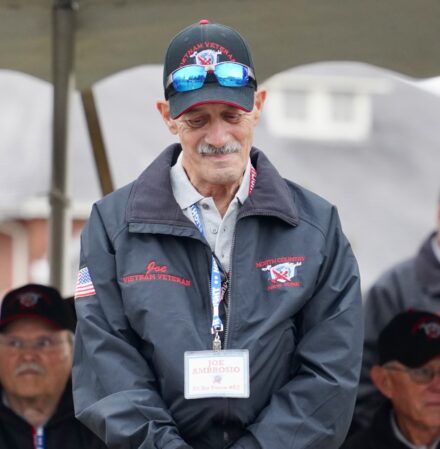 Joseph Ambrosio – US Air Force 1976-1982 – Vietnam
Joseph Ambrosio – US Air Force 1976-1982 – Vietnam
Enlisting at the age of 22, Joseph began his journey at Lackland Air Force Base for basic training—eight tough weeks that started with a stern “Get in the jeep and shut up” from the sergeant holding a sign with his name.
After tech school on the same base and advanced training at Lowry Air Force Base in Denver, Ambrosio quickly rose to leadership. As one of the older enlisted airmen, he led his entire battalion in marches—often with his squadron singing custom-made songs around base.
He was later stationed at Plattsburgh Air Force Base, where he served as dormitory manager, conducted inspections, and even trained with drug-sniffing K-9s—wearing the bite suit.
The biggest controversy he remembers while stationed in Plattsburgh was between the Yankees Fans and Red Sox fans.
One of his fondest and most emotional roles was serving in the Air Force Honor Guard from 1977 to 1982—honoring fallen service members at funerals and proudly marching in parades.
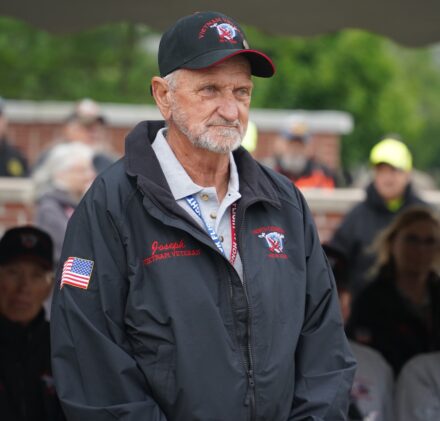 Joseph Aubrey – US Army 1968-1969 – Vietnam
Joseph Aubrey – US Army 1968-1969 – Vietnam
Joseph Aubrey enlisted in the U.S. Army in 1968 at just 18 years old, leaving the North Country for the first time in his life. He completed boot camp in New Jersey and received specialized training as a lineman—learning to run communication wire, climb poles, and operate switchboards essential for battlefield coordination.
In Vietnam, Joseph served with the 1st Air Cavalry Division as a radio operator and lineman. His role was vital: setting up radio lines in the field and running the command post switchboards to keep communication flowing between units. He and his team were often sent ahead to establish new landing zones. They’d secure the perimeter, protect engineers, and support crews, and help build out new base areas—runways, bunkers, and more.
Much of their work took them up and down the DMZ, often under fire. The first few days in any new area were the most dangerous—they endured constant mortar attacks, working through intense heat, heavy humidity, sea rations, and salt tablets just to stay functional. They were targeted frequently because they were always on the move and in exposed areas.
Though there weren’t many light-hearted memories from his tour, Joseph did get a brief reprieve during R&R, traveling to Hong Kong before returning home in 1969.
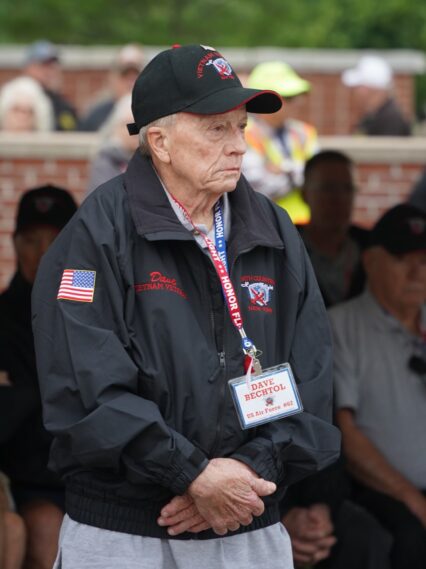 David Bechtol -US Air Force 1970-1990 – Vietnam
David Bechtol -US Air Force 1970-1990 – Vietnam
David enlisted at 22 and began his journey at Lackland Air Force Base, completing boot camp then Officer Training School, followed by pilot training.
He flew the KC-135 in Indiana, and later continued his service at Randolph Air Force Base in San Antonio. He was stationed at Grissom Air Force Base, where he mastered the KC-135, before receiving orders to California to fly the U-2 aircraft.
The U-2s, known for their ability to reach altitudes of 70,000 feet, became his vehicle for reconnaissance missions. He flew over Europe, along the German border, and had the rare experience of flying alongside a Czech MIG. His global missions took him to places like Alaska, England, Japan, Australia, Philippines, and Korea, among others.
David flew through some challenging and sensitive missions, including air sampling over Russia’s nuclear tests and photo missions in support of international agreements. He also conducted weather reconnaissance and directed aircraft in relation to hurricane hunters over Sacramento. His role required constant readiness.
Throughout his career, he was often on alert with his crew—ready to launch within minutes— camping out in runway shelters during high-stakes moments. Lieutenant Colonel David Bechtol served with over two decades of continuous active service.
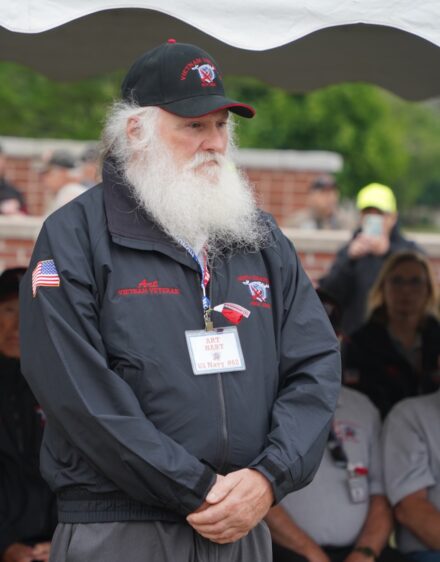 Arthur Hart – US Navy 1973-1974 – Vietnam
Arthur Hart – US Navy 1973-1974 – Vietnam
Art enlisted when he was 17 years old, influenced by both of his older brothers who served in the Navy. Boot camp brought him from Clinton County to Great Lakes, Illinois. Upon arrival, he learned that his Second-Class Gunner mate was originally from Malone, NY. While Art doesn’t remember many specific details from his service, a few memories from boot camp stand out, particularly the tear gas training. They made everyone take off their masks 10 minutes before exiting, and the experience was painful.
During his time there, Art participated in firefighter training on the base. They were transported from the barracks to the training site in cattle cars. This training later inspired his commitment as a volunteer fireman for the West Chazy Fire Department for 25 years, including serving as Fire Police Captain for 23 years.
Art learned a valuable lesson during boot camp about not talking in ranks. One day, while chatting with his friend Joe in line, the drill sergeant announced, “I need two volunteers, everyone else in line take two steps back.” After a moment, Art noticed everyone else had stepped back and turned to Joe, saying, “I think we are in trouble, why did everyone step back?” That moment taught him to keep quiet in ranks from then on.
Assigned to the USS Charleston as a boiler room technician. The Charleston was his brother’s ship and one of Art’s top choices. Stationed together in Norfolk, VA, at Pier 5 while the ship was in dry dock, they awaited its recommissioning. One of Art’s responsibilities was testing the engines, which involved hand-cranking the boilers. The port side boiler started perfectly, but when they tried to ignite the starboard boiler, they waited too long, and it received too much fuel. The captain reported seeing 10-foot flames shooting out of the water that added two extra weeks to the six-month refurbishing process.
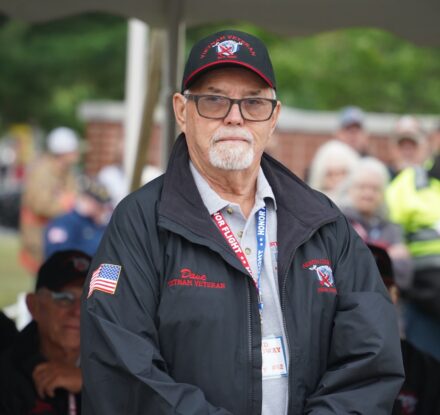 David Hemingway – US Navy 1972-1976 – Vietnam
David Hemingway – US Navy 1972-1976 – Vietnam
David enlisted in the Navy at 18 years old, inspired by his father, who had served for six years in the Navy. He completed boot camp at Great Lakes, flying from Albany to Chicago. By the time he landed and settled in for the night, it was 3:30 AM. At 6 AM, they woke everyone up by banging pot covers and shouting, “You’re not civilians anymore; you’re in the military. Act like it, get up, and get moving.” At that moment, David thought to himself, “What the hell did I do?”
He was assigned to the USS Mount Baker, a ship that carried ammunition, where he worked on electrical components for the gun bay’s director. All the guns had to be tested before they could be put into commission. His ship started their assignment in the Panama Canal and then was transferred to the East Coast of Europe.
David completed his time in the Navy aboard the ship as a payroll disbursement clerk. Depending on where they docked, he often had to disembark to perform currency exchanges, carrying the money handcuffed to himself. Dave enjoyed his time in the service, he only came home once in the 4 years he was enlisted and spent the rest of his leaves traveling Europe. Some of his favorite memories include spending all four of his Christmases in Europe.
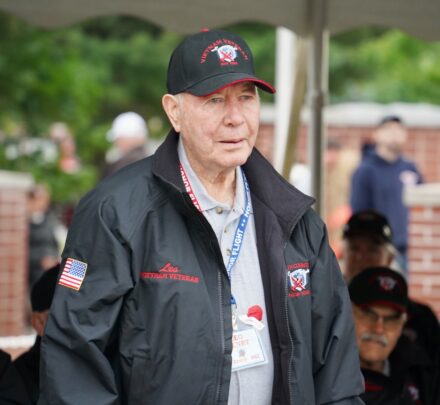 Leo Henry – US Army 1961-1962 – Vietnam
Leo Henry – US Army 1961-1962 – Vietnam
Drafted at 22 years old, Leo was raised on a dairy farm alongside his three brothers—remarkably, all four served in the military.
Leo completed basic training at Fort Campbell, Kentucky, before heading to Fort Benning, Georgia. During a tense moment in the Cold War, he, and his unit, just 30 minutes from Cuba, slept in C-131 aircrafts with their gear on—ready to deploy at any moment. Fortunately, the conflict was averted.
Leo served in the 9th Infantry, where he favored the M16 rifle. Later, in California, he trained as a welder and worked on the bomb casings that released napalm in Vietnam.
His final and favorite post was Fort Drum, New York, where he drove tanks during training exercises through Watertown.
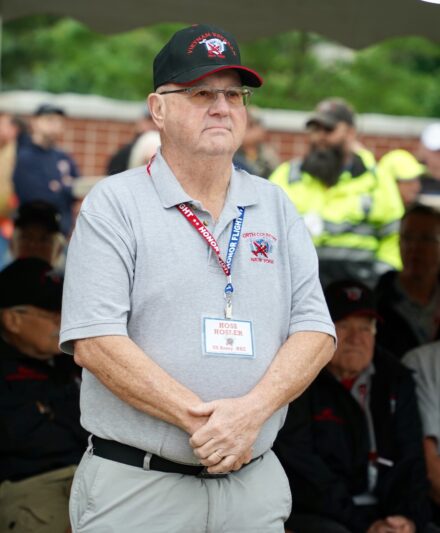 Gifford Hosler – US Army 1969-1970 – Vietnam
Gifford Hosler – US Army 1969-1970 – Vietnam
Gifford was drafted into the U.S. Army at the age of 20. Like many young men at the time, he was picked up with a group of local draftees and sent to Fort Dix for basic training. A mechanic with a talent for electronics, Gifford was selected for radio school—eight weeks at Fort Dix, followed by 13 weeks of advanced radio and teletype training in Georgia. Each morning was spent learning Morse code, each afternoon on typing. Thanks to high school typing classes, he already had that part down—so he devoted most of his energy to mastering code and teletyping. He graduated in the top 10 of his class.
When his orders came in, they sent him to Vietnam. He was stationed in the Mekong Delta, an area they joked was a foot above sea level in the dry season, and a foot below in the rainy.
As chief radio operator at the province’s Tactical Operations Center Gifford managed the center of communication for the entire region. He coordinated all radio traffic between ground forces, helicopters, and spotter planes, managing everything from daily field movements to night airstrikes. He worked closely with military advisors under MAC-V, and ensured assets were in the right place at the right time, without risking friendly fire. In addition to his day-to-day duties, Gifford was entrusted with personally delivering monthly updates of codes, call signs, and passwords throughout the province by helicopter.
His work was the backbone of mission coordination, and essential to keeping troops connected.
One of Gifford’s funniest—and scariest—memories came when smoke started pouring through the windows of camp. Someone yelled “GAS!” and chaos erupted soldiers scrambling for masks, shouting, and running. But when someone finally ran outside, they discovered… It was just someone spraying for bugs.
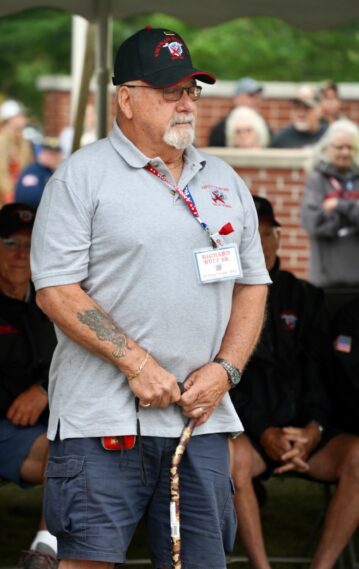 Richard Huff Sr. – US Coast Guard 1970-1974 – Vietnam Era
Richard Huff Sr. – US Coast Guard 1970-1974 – Vietnam Era
Richard Huff served in the U.S. Coast Guard. He began his journey in boot camp, where he was honored with the role of leading graduation ceremonies every week.
Richard trained at Yeoman School on Governors Island, New York, specializing in administration. After graduation, he was assigned just across the harbor to Floyd Bennett Field in Brooklyn. Richard joined the skeleton crew for a 30-day deployment, working with the National Weather Service on search and rescue missions and collecting vital weather data at sea.
Temporary orders took him aboard the USCGC Spencer, a historic World War II-era ship.
Before the Spencer was decommissioned, Veterans who had served during WWII were invited for one final voyage. Richard had the rare opportunity to meet and sail alongside those who had served decades earlier, before the ship made its final journey to Curtis Bay and the naval “boneyard.”
Richard also served aboard the Coast Guard Cutter Dallas, based at Governors Island. From there, he traveled the world—Bermuda, Greece, and beyond—performing search and rescue missions. Often, they recovered the injured or transported the remains of those lost at sea. Returning those bodies to their families was a sad, but important duty.
Throughout his time in the Coast Guard, Richard took great pride in his work and cherished the people, the travel, and the purpose of his service.
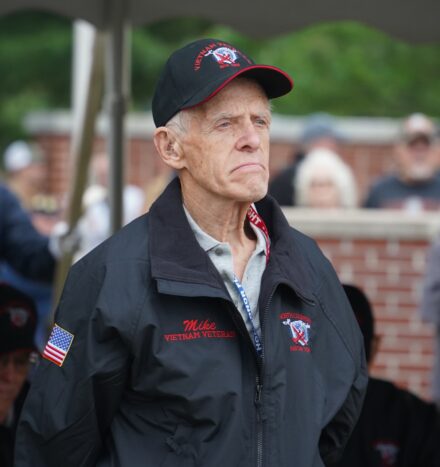 Michael LaFontaine – US Army 1963-1966 – Vietnam
Michael LaFontaine – US Army 1963-1966 – Vietnam
A graduate of Plattsburgh State University. Michael came from a proud military family—his father served in World War I, one brother in World War II, and another in the Korean War, all in the Army. Following this tradition, Michael enlisted in the Army after college.
Michael deployed to Vietnam, as part of the first infantry troops sent to the region. His base of operations was near Saigon, from which his unit conducted patrols and search-and-destroy missions. He led a platoon of approximately 40 soldiers. During one mission, his unit came under friendly fire from a phosphorus round mistakenly fired by an allied aircraft. Michael was awarded the Purple Heart.
While serving in Vietnam, Michael was approached by his commander with an unusual request: a reporter, Ruben Salazar, wanted to accompany a patrol in the field to gain firsthand insight into combat operations. Salazar had grown restless in Saigon and was seeking a better understanding of what soldiers were experiencing on the front lines.
He agreed and offered Salazar his personal .45 pistol for protection. The journalist declined, insisting he did not carry weapons as a correspondent.
The patrol set out into the jungle in standard formation, with Michael behind the point man, using a topographic map and compass to navigate. Roughly 15 minutes into the mission, LaFontaine heard rapid footsteps from behind. The entire patrol halted and dropped to the ground. It turned out to be Salazar, rushing up the line in a panic. His first question to LaFontaine was, “Do you know where we are?”—followed immediately by, “Can I borrow your pistol?”
Michael was promoted to First Lieutenant and assigned as an assistant to the operations officer, preparing mission data for outbound units.
Throughout his deployment, Michael collected photographs, local currency, and military propaganda and even insects, which he mailed home to his wife-to-be, Pat.
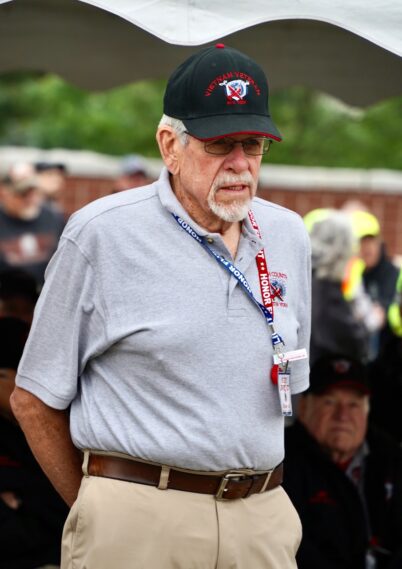 Gary Lawrence – US Army 1965-1967 – Vietnam
Gary Lawrence – US Army 1965-1967 – Vietnam
Drafted at age 21, Gary completed basic training at Fort Dix, New Jersey, before joining the newly formed 196th Light Infantry Brigade at Fort Devens, Massachusetts. The brigade was called “light infantry” because it had no heavy artillery or armor and was designed for rapid deployment.
Originally slated for a police action mission in Santo Domingo, plans shifted as tensions eased.
At the time, the 196th was the only combat-ready unit left in the United States. and was instead deployed to Vietnam. Soldiers were told they were heading to a combat zone, but only learned it was Vietnam when their ships – the Patch and Darby – dropped anchors in Saigon. Trucks took them to their base camp in Tay Ninh.
Base camp consisted of a big field with a dirt runway, and piles of tents. They got to work building base from scratch. laying sidewalks and pitching tents. There was a short dirt runway for C-123s and C-130s. It was a lot of fun to watch them land because they were reversing the props on the aircraft before, they hit the ground to slow them down in such a short distance.
Gary served in supply and support, distributing critical resources like food, fuel, and clothing to troops. He occasionally ventured into the field to deliver rations. One of his fondest memories was the delivery of ice cream by helicopter—a small gift from Uncle Sam that meant a lot.
Later, his unit was sent north to Chu Lai to help secure a Marine base near the DMZ, testing the rapid deployment capabilities of the new brigade.
After his discharge, Gary returned to Fort Dix and then home, where he continued serving his community. He spent 20 years with the Lake Placid Police Department.
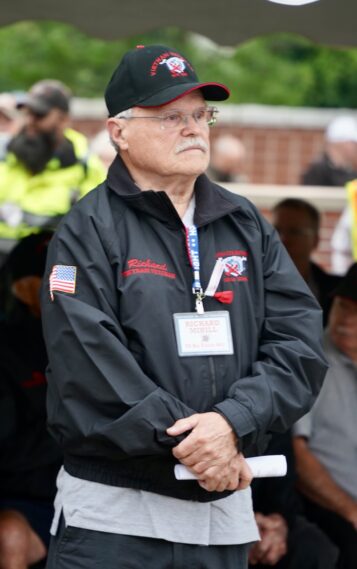 Richard Mihill – US Air Force 1972-1975 – Vietnam
Richard Mihill – US Air Force 1972-1975 – Vietnam
Richard Mihill served in the U.S. Air Force during the Vietnam War. After completing basic training at Lackland Air Force Base in Texas, he trained as an aircraft maintenance specialist. Though originally considered for missile duty, his mechanical skills led him to prop plane aircraft maintenance instead.
He worked primarily on propeller-driven planes like the EC-47 and the C-121, even though he hoped to work on jets. Richard became part of the 362nd Tactical Electronic Warfare Squadron, serving in Thailand during the final years of the war. One of his most memorable experiences was flying in an EC-47—a plane he knew inside and out after years of hands-on work.
He later served at Plattsburgh Air Force Base.
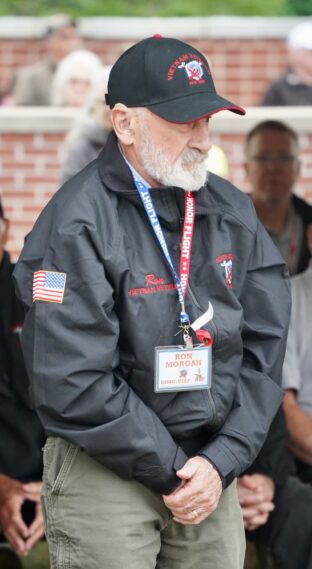 Ronald Morgan – US Marine Corps 1956-1962, US Air Force 1962-1998 – Vietnam
Ronald Morgan – US Marine Corps 1956-1962, US Air Force 1962-1998 – Vietnam
Enlisting in the Marine Corps just two days before his 17th birthday, with a parent’s signature. Ronald served his 6-year Marine enlistment before transferring to the U.S. Air Force, where his career took flight—literally.
Ronald Morgan became a pilot, graduating from Air Force Flight School and serving as a flying safety officer and, eventually, Chief of Staff for the Vermont Air National Guard.
Throughout his over four-decade career, he flew missions in Texas, Okinawa, Japan, South Korea, and Vietnam. His favorite aircraft—the F-102 —was the plane he trusted most, and one in which he performed his most unforgettable missions.
Once, flying over troops stationed in Korean rice paddies, he was radioed with a request for a little excitement. He pulled his aircraft up until it lost airspeed, then dropped right down. The troops later called to thank him—they said it was the most thrilling thing they’d seen in months.
Known for his calm under pressure, Ronald saved several aircrafts in situations that others might not have had the ability or brass to save. Ron knew it was important that the number of landings should always equal the number of takeoffs.
After 42 years of service, Ronald Morgan retired as a Brigadier General. Together with his son, and Guardian, Colonel Michael Morgan, they proudly share 80 years of combined service to our country.
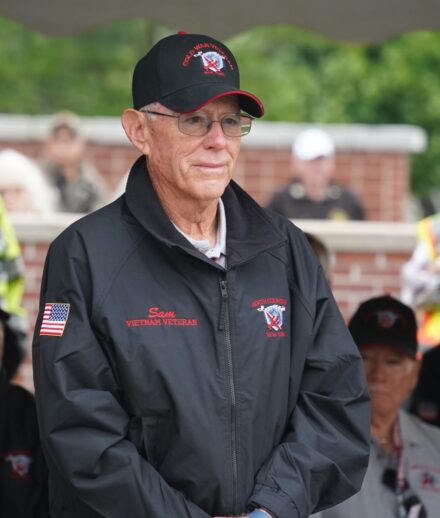 William Samuelson – US Army 1972-1992 – Vietnam
William Samuelson – US Army 1972-1992 – Vietnam
Entering service as a commissioned officer after four years in ROTC at Norwich University he began his career at Indian Hill, Pennsylvania, where he managed the Officers Club and liquor store.
He quickly rose through the ranks—first as battalion adjutant, then commander of a personnel team. After completing the Officer Advanced Course in Indianapolis, he was stationed at Fort Drum, back when it was a quiet post without the 10th Mountain Division. He served as post adjutant and later as a company commander.
Next, he attended Command and General Staff College in Kansas, which led to an assignment in Europe as Deputy Adjutant General for the 2nd Defense Command in Germany. There, he oversaw personnel coordination across Europe while transitioning from older systems to the Patriot missile program.
His longest station was in Augsburg, Germany, near the Alps. Over the years, he and his family lived across Europe, including England. He later returned to Fort Drum, where he served as Director of Personnel during the early days of the 10th Mountain Division.
One of his most memorable moments came when escorting Mrs. Powell and a Soviet general’s wife during a Cold War-era visit. The quiet Soviet General finally spoke at the commissary, stunned by the amount of food available to everyone on base—Despite decades of training to view them as adversaries, soldiers on both sides shared the same hopes: peace, stability, and a good life for their families.
Lieutenant Colonel William Samuelson retired after 20 years of dedicated service.
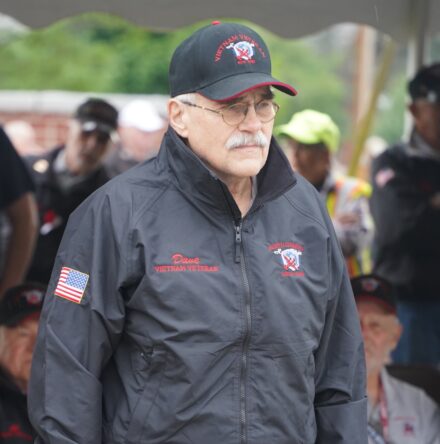 David Staszak – US Army 1966-1991 – Vietnam
David Staszak – US Army 1966-1991 – Vietnam
David enlisted at 19 years old in Buffalo, New York, and completed basic training at Fort Dix. Through a bit of good timing—and a policy change that temporarily waived the college requirement—David earned a spot in Officer Candidate School and began climbing the ranks.
His early assignment took him to Panama, where he served as a platoon leader and company executive officer. There, he met a warrant officer who worked in the supply area who gave him some unforgettable advice: “…a good bottle of scotch can go a long way.” That advice would come in handy more than once.
David deployed to Vietnam, where he commanded a company in the 101st Airborne Division. One day in the field, he stepped on a booby-trapped punji stake, suffering an injury that earned him the Purple Heart—and a helicopter ride out of the jungle. After six months, he transitioned to Battalion Adjutant, a role he calls “the best job in the Army.” He managed operations at base camp—where mud was everywhere—and when his battalion commander asked for a shortcut sidewalk to be put in, the engineers refused. So, David remembered the advice. He found a warrant officer, brought a bottle of scotch, and soon enough, the sidewalk was built.
After leaving active duty, David joined the Army Reserves, continuing to lead as a company commander and later running a leadership academy.
As a Boy Scout, he had long mastered land navigation and problem-solving, which served him well throughout his career.
At Fort Jackson, the brigade wanted to get a training vehicle from South Carolina back to Buffalo. David was asked to help. Once again, he turned to his tried-and-true method—tracked down the right warrant officer, presented a bottle of scotch, and the vehicle made it to Buffalo without a hitch.
David eventually earned the rank of Lieutenant Colonel, leading leadership projects across the country.
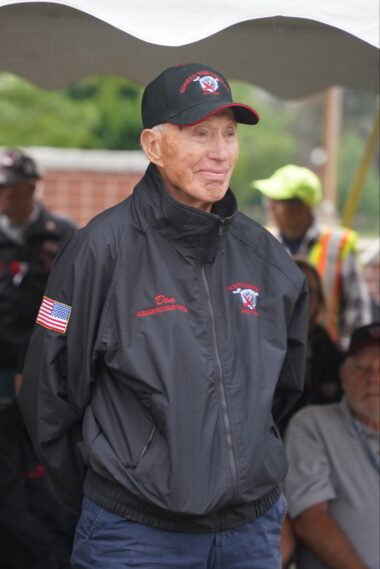 Donald Wood – US Army 1949-1991 – Vietnam
Donald Wood – US Army 1949-1991 – Vietnam
Donald Wood, Veteran Guardian to his best friend and brother-in-law David Staszak.
Donald began his military journey at just 16 years old, fibbing about his age to join the National Guard. A proud Boy Scout at the time, Donald was drawn in by the promise of camping, free meals, and a pay!
He spent a decade with the 174th Infantry in Buffalo before transferring to the Army Reserve, where his service would take him across the globe.
At 27, he accepted a position in France with the Department of Defense Schools, pausing his military service.
When he returned, he rejoined the Reserves and continued serving abroad in Germany, Korea, and elsewhere through assignments at international schools.
As a 12B Combat Engineer, Donald concluded his career with the 10th Mountain Division at Fort Drum.
Donald’s brother is buried at Arlington Cemetery, he was in the United States Navy, stationed in Alaska traveling over the pacific and his plane went down, it was not recovered until some 40 years later when a researcher near British Columbia spotted the plane under snow and ice, they were able to recover the plane and crew and finally lay those soldiers to rest.
Posted: June 28th, 2025 under Adirondack Region News, Community Events, General News, Honor Flights, National History, Northern NY News, Peru/Regional History, Veterans' News.
